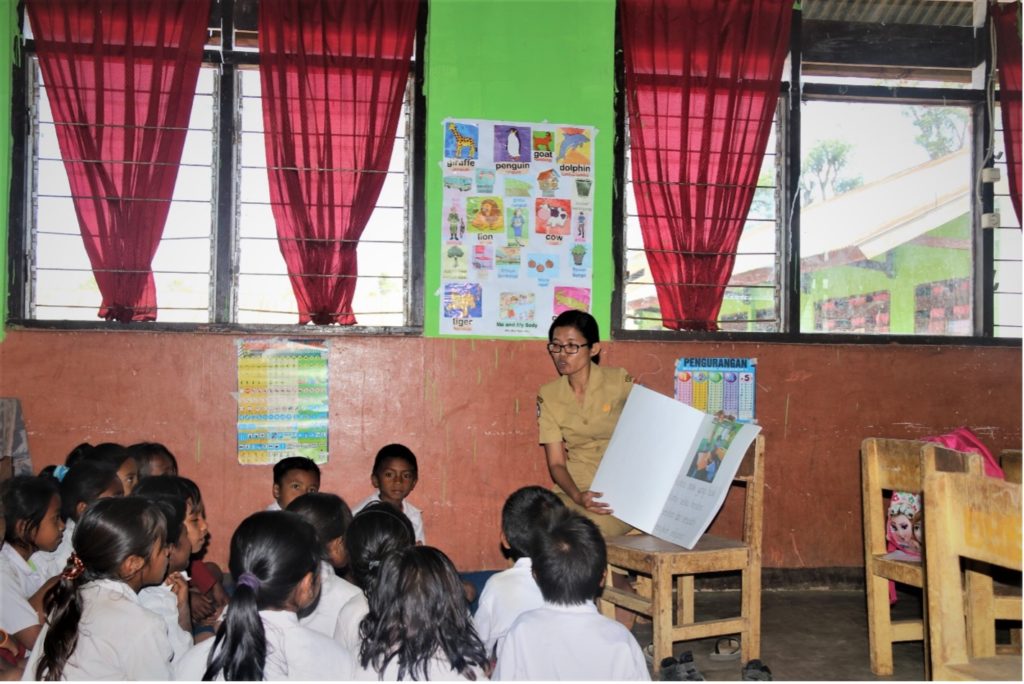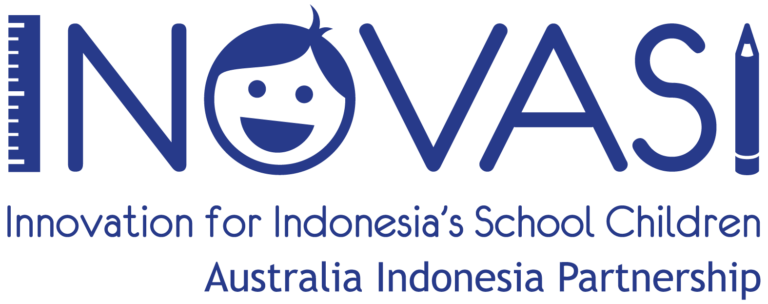
In schools, teachers no longer rely only on textbooks. They also use non-academic story books to stimulate students’ reading interest and, eventually, improving student’s literacy skills. Unfortunately, the availability of non-textbooks in eastern Indonesian provinces, such as East Nusa Tenggara, remains a challenge. Realising the importance of contextual non-textbook reading materials for students, especially primary level students, the local government in Sumba Island, East Nusa Tenggara and INOVASI worked together with teachers in developing Big Books, and print as well as distribute the books to various schools in the island.
A survey conducted by the Innovation for Indonesia’s School Children (INOVASI) in 2017 and 2018 found that one of the main barriers to improving learning outcomes, especially in literacy, was the lack of books that were interesting and reading level-appropriate in schools.
In response, to date, INOVASI and several of its implementing partners have distributed over 70,000 children’s story books to partner schools in four districts in Sumba Island.
Not only that, INOVASI also trained and coached teachers on how to utilize the books as learning resources, optimizing their benefits in and outside the classroom.
The teachers were also encouraged to be creative in developing learning tools that are easy to make, affordable, and contextual, such as the Big Book. Referring to a larger sized book than a regular textbook in class, a Big Book contains stories written in short sentences that is appropriate for novice readers in the early grades. The large text and its complementing illustration enable students to easily read and comprehend the story.
Making a Big Book is not difficult, such as shown by the experience of Sahida Pekaperi, a first-grade teacher in a public elementary school, SD Inpres Haming – one of INOVASI’s partner schools in East Sumba District. The first step, Sahida said, is to determine a main theme that is relevant with a lesson’s topic. For example, about daily manners.
“Using the theme that I chose, I then made a story about Pancasila. I wanted my students to understand how to practice the values of Pancasila (Five Principles of the Indonesian State) in everyday life,” said Sahida. A Big Book is also useful to teach higher order thinking skills (HOTS) to students, especially analysis, evaluation, and creation skills.
To have a successful learning, a Big Book’s content needs to match the students’ comprehension level. In Sahida’s experience, she carefully chose themes that are familiar to her students. A page in her Big Book, for instance, tells about daily prayers that students say before and after every lesson. After reading the sentences aloud, Sahida prompted the students with questions, such as, “Which principle in the Pancasila that you think best describes the prayer routine like the one we just did?”, to which students responded, “The first one.”
Sahida then put another question to make her students reflect the information with their own experience, such as, “Why do you think praying is one of the ways we practice the first principle?” From the students’ different answers, Sahida was able to gauge their understanding of the first principle, which describes the value of one’s faith, not only in religious but also in social life, and praying as a way to practice that faith.
The next step in Big Book making, Sahida explained, is to design the book’s outline and develop it into a complete story. Finally, illustration is added to make the book more attractive. An illustration can be manually drawn, cut from a book or magazine, or from the internet. Regardless of the source, the image must be a visual description of a scene or content of its page.
Thanks to Sahida’s interesting story and product, her Big Book titled Rambu Anak yang Baik (Your Everyday Manners) has been chosen as one of the 18 Big Book titles created by East Sumba teachers to be printed by INOVASI and East Sumba District Education Office.
The Education Office also realised the importance of contextual non-textbook reading materials for students, especially primary level students. They then involved the Big Book authors – the same teachers whose books were printed by INOVASI – to create more contextual non-textbook materials. In collaboration with the Damaring Foundation, this initiative resulted in 40 titles that have been registered with ISBN and printed for as many as 8,000 copies. Unfortunately, Covid-19 pandemic suspended book distribution, the Big Books included.
Beyond East Sumba, teachers in Central Sumba, West Sumba, and Southwest Sumba also came up with their own Big Books. Combined, there are now 35 titles available across the four districts. While the books target different reading levels, they all highlight the daily experience of a child in Sumba, such as going to the field, the traditional houses, traditional games, and the local culture in general.
The teachers’ creativity went even further than the topics they raised. In West Sumba, there are many primary level students who still need to catch up with their Bahasa Indonesia skills. In Lokory elementary public school, first-grade teacher Apliana B. Awang wrote a bilingual Big Book, in the local Sumba language and in Bahasa Indonesia, to help students understand their lessons. To introduce the letter M, for instance, Apliana uses the word “Manu”, the local language for chicken and the image of a chicken. Underneath, she put the Indonesian word “Ayam”. These words contain the letter M, which help the students to identify and pronounce it in both languages.
Sahida and Apliana said they observed significant progress in their students after they brought the Big Books in class. “My students become more energized and engaged,” said Sahida, while Apliana noted her students’ speedy improvement in their reading ability. “One student even achieved ‘Reading for Comprehension’ level within just four months,” she said.
In total, INOVASI and the education offices in each partner district in Sumba Island have printed over 450 copies of Big Books. The books have been distributed to INOVASI’s partner schools and other schools in the districts.






